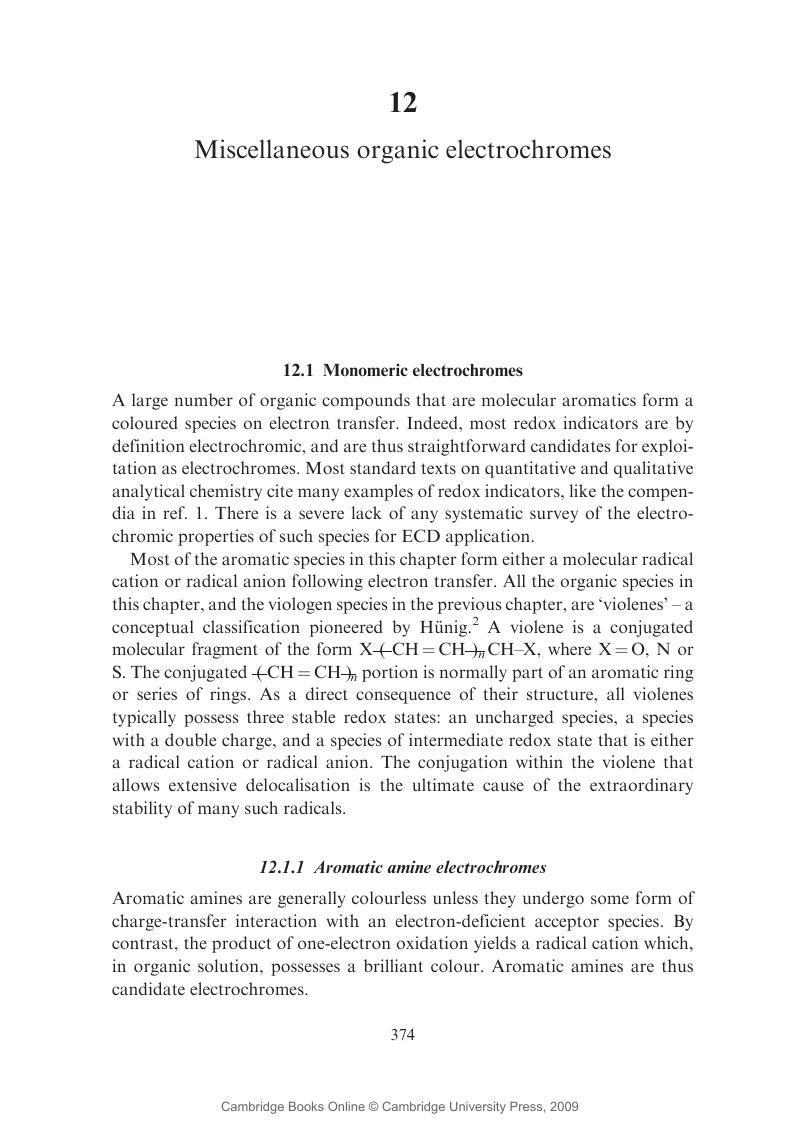Book contents
- Frontmatter
- Contents
- Preface
- Acknowledgements
- List of symbols and units
- List of abbreviations and acronyms
- 1 Introduction to electrochromism
- 2 A brief history of electrochromism
- 3 Electrochemical background
- 4 Optical effects and quantification of colour
- 5 Kinetics of electrochromic operation
- 6 Metal oxides
- 7 Electrochromism within metal coordination complexes
- 8 Electrochromism by intervalence charge-transfer coloration: metal hexacyanometallates
- 9 Miscellaneous inorganic electrochromes
- 10 Conjugated conducting polymers
- 11 The viologens
- 12 Miscellaneous organic electrochromes
- 13 Applications of electrochromic devices
- 14 Fundamentals of device construction
- 15 Photoelectrochromism
- 16 Device durability
- Index
- Plate Section
- References
12 - Miscellaneous organic electrochromes
Published online by Cambridge University Press: 10 August 2009
- Frontmatter
- Contents
- Preface
- Acknowledgements
- List of symbols and units
- List of abbreviations and acronyms
- 1 Introduction to electrochromism
- 2 A brief history of electrochromism
- 3 Electrochemical background
- 4 Optical effects and quantification of colour
- 5 Kinetics of electrochromic operation
- 6 Metal oxides
- 7 Electrochromism within metal coordination complexes
- 8 Electrochromism by intervalence charge-transfer coloration: metal hexacyanometallates
- 9 Miscellaneous inorganic electrochromes
- 10 Conjugated conducting polymers
- 11 The viologens
- 12 Miscellaneous organic electrochromes
- 13 Applications of electrochromic devices
- 14 Fundamentals of device construction
- 15 Photoelectrochromism
- 16 Device durability
- Index
- Plate Section
- References
Summary

- Type
- Chapter
- Information
- Electrochromism and Electrochromic Devices , pp. 374 - 394Publisher: Cambridge University PressPrint publication year: 2007



